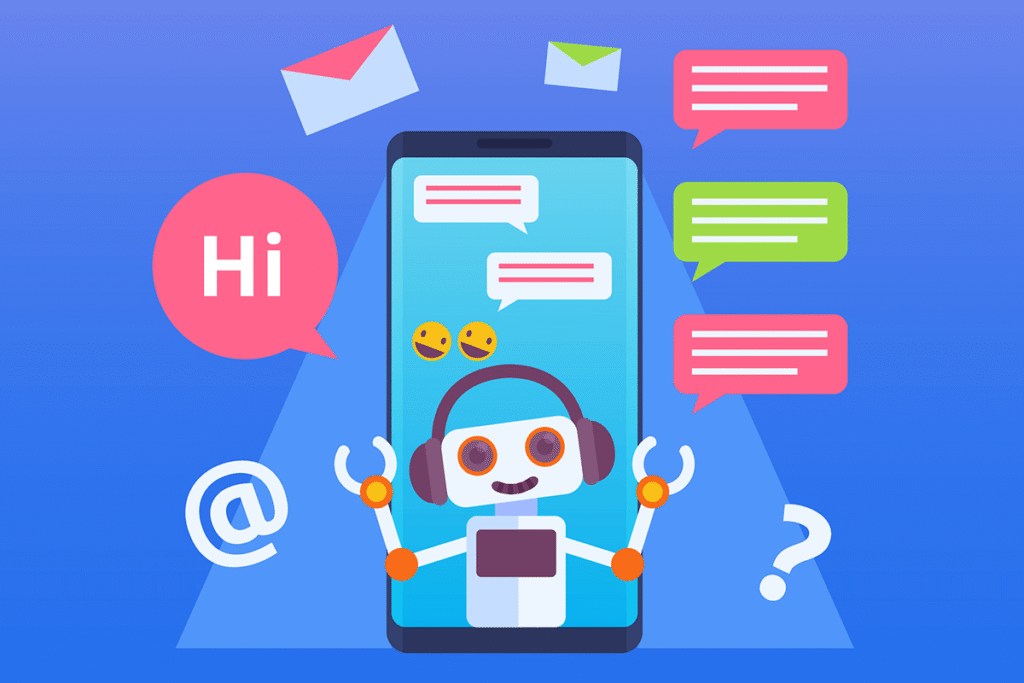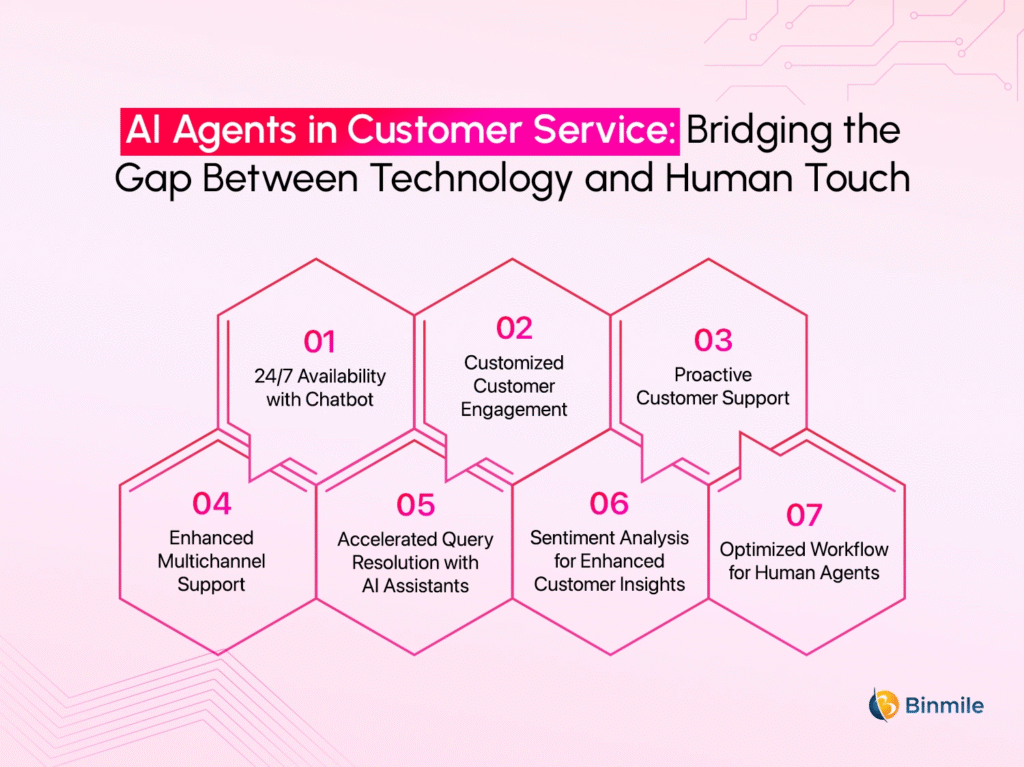How AI Is Transforming Customer Service in 2025
AI Is Transforming Customer Service Introduction
Remember the last time you had to call customer service and spent 15 minutes yelling “operator” into the phone like a madman? Or waited two days just to get a reply that didn’t answer your question at all? Well, those days are numbered, thankfully.
In 2025, Artificial Intelligence (AI) is doing something magical: turning customer service from a necessary evil into a competitive advantage. And no, it’s not just about replacing humans with soulless bots. It’s about making customer service smarter, faster, and a whole lot less painful for everyone involved.
Let’s break down how AI is changing the game, and how businesses are using it not just to solve problems, but to create delightful customer experiences (yes, you read that right: delightful).
Why This Matters Now
Customers today are not what they used to be. They’re smarter, faster, more connected , and honestly, a bit more impatient (thanks, TikTok attention span). They expect instant responses, personalized solutions, and flawless support, across multiple platforms.
And if your business can’t keep up? They’ll switch in a heartbeat.
That’s where AI comes in. With the ability to process data at lightning speed, learn from every interaction, and stay “on” 24/7, AI is now the backbone of modern customer service. It’s not just about cutting costs, it’s about exceeding expectations.
1. AI Chatbots: From Robotic Scripts to Real Conversations
Let’s address the elephant in the room: chatbots. You probably have a love-hate relationship with them. They used to feel like talking to a confused toaster. But in 2025, AI-powered chatbots are a whole different story.
Thanks to natural language processing (NLP) and machine learning, today’s chatbots:
- Understand context
- Recognize sentiment
- Learn from past conversations
- Handle complex queries without sounding like a robot in a panic attack
Example: A customer asks, “Hey, I ordered a jacket last week. It hasn’t arrived yet. Can you check?”
Modern AI bots can identify the user, access the order system, track the shipment, apologize for the delay (with human-like empathy), and offer a voucher, all in under 10 seconds. No hold music required.
Bonus? They’re working 24/7, never get grumpy, and don’t need coffee breaks.
2. Voice AI: Talking to Machines Just Got Less Awkward
Thanks to platforms like Alexa, Siri, and Google Assistant, voice AI has made massive strides. In 2025, voice assistants in customer service aren’t just glorified answering machines, they’re conversational agents that actually listen.
How it’s used:
- Managing call centers with AI-powered IVR (interactive voice response)
- Handling routine tasks like bill payments, account inquiries, and password resets
- Transferring complex issues to human agents, seamlessly
And here’s the kicker: modern voice AI can detect tone and emotion. So if you’re frustrated, it knows. And if you’re calm and curious, it responds accordingly.
Now imagine saying, “I lost my credit card,” and hearing:
“Don’t worry, Abdul. I’ve locked your card for safety. A replacement is on the way, and it’ll arrive in two days. Is there anything else I can help with?”
Feels good, right?
3. Hyper-Personalization: AI That Knows You Better Than Your Best Friend
What if your customer support didn’t start every chat with “Can I have your account number please?”
What if they already knew who you were, what product you own, what problem you had last month, and how it was resolved?
That’s AI-powered personalization.
How it works:
- AI integrates with CRM and past support history
- It tailors responses based on behavior, preferences, purchase history
- Even tone, word choice, and urgency are adapted in real-time
Example: If you’re a VIP customer, the bot knows. If you’ve complained about delivery before, it’ll flag it and proactively address it.
This isn’t just support , this is relationship building at scale.
4. AI-Assisted Agents: Humans, But Supercharged
AI is not here to replace customer service reps. It’s here to help them be better, faster, and more accurate. Think of it as a sidekick with unlimited memory and lightning-fast recall.
Features of AI-assisted agents:
- Real-time response suggestions
- Instant access to knowledge bases
- Smart auto-fill of support tickets
- Sentiment analysis to guide tone and escalation
So instead of fumbling through 20 browser tabs, agents get real-time suggestions like:
“Based on customer history, recommend plan upgrade with 10% discount.”
Or
“This customer has reported a billing issue twice this month. Escalate to supervisor.”
Humans still provide the empathy and nuance, AI just makes them work like pros on caffeine (without the crash).
Learn how AI is automating everyday workflows beyond just support teams.
5. Sentiment Analysis: Reading the Room, Digitally

Sometimes, it’s not about what the customer says, but how they say it. AI can now analyze:
- Text tone
- Emoji usage (yes, seriously)
- Typing speed and punctuation
- Voice inflection (in calls)
This helps brands detect frustration early, route to the right teams, or switch to human reps before things go south.
Example:
Customer: “This is the third time this has happened. I’m honestly so sick of this.”
AI: emotional red alert activated
Response: “We’re really sorry you’ve had a poor experience. Let me connect you to our senior support rep right away.”
You’ve just defused a bomb before it exploded, thanks to a machine that can read the digital room.
6. Predictive Support: Solving Problems Before They Start
Imagine this:
You get a message that says,
“Hi Abdul, we noticed your internet connection has been unstable for 3 days. We’ve scheduled a technician visit tomorrow between 10 AM and 1 PM.”
You didn’t even call support.
That’s the power of predictive customer service.
AI constantly analyzes device logs, user activity, and error patterns to:
- Detect issues
- Trigger alerts
- Offer solutions proactively
This flips the traditional model on its head. Instead of “break > complain > fix,” it becomes “detect > fix > delight.”
7. Omnichannel Harmony: The AI Orchestra Behind the Scenes
In 2025, customer service spans email, chat, phone, WhatsApp, Instagram DMs, TikTok comments (yes, even there).
The problem?
Different channels = scattered conversations = confused customers.
The solution?
AI integrates and synchronizes all channels into one cohesive experience. So if a customer starts on Instagram, continues on live chat, and follows up by email, the system tracks it all, stitches it together, and knows exactly where to pick up.
This isn’t just good UX, it’s a lifesaver for teams trying to deliver consistent service in a fragmented world.

FAQ
Q1: Will AI replace customer service jobs?
A1: Not quite. AI handles the repetitive stuff. Human agents still provide the empathy, creativity, and complex problem-solving. It’s a partnership, not a takeover.
Q2: Is AI in customer service expensive to implement?
A2: Costs vary, but many tools are scalable. And in the long run, AI saves time, improves satisfaction, and boosts loyalty, making it a smart investment.
Q3: What about privacy? Can customers trust AI with their data?
A3: Responsible companies implement strict data protection policies and comply with regulations (like GDPR). Transparency is key.
Final Thoughts
Customer service used to be reactive, a last resort when things went wrong. In 2025, thanks to AI, it’s becoming proactive, predictive, and even pleasant (who would’ve thought?).
The businesses that embrace AI aren’t just saving time, they’re delivering experiences that win loyalty. Because in a world of automation, personalization is the new magic.
AI isn’t just transforming customer service, it’s also reshaping financial markets in surprising ways.
Want to see what else AI is doing behind the scenes? Keep exploring aihunterguides.com, your go-to place for all things AI, from business to bots and beyond.

Pingback: Amazing ChatGPT Productivity Tasks: 9 Time-Savers You Should Try